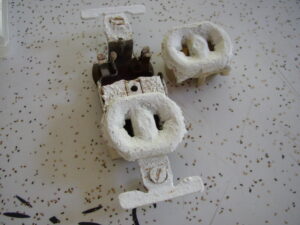It’s been a long time since we’ve brewed a beer. Going by my financial software (which is going to be indispensable when I write my memoirs), the last time I bought homebrew ingredients was June 21, 2000, and according to Oracle Calendar, we brewed an Amber Ale on the following Saturday, the 24th. That’s practically a lifetime ago. If I recall, we picked an Amber Ale in honor of Alaskan Amber, which we had consumed large quantities of during our recent trip to Alaska. By 2000, I had brewed several batches of beer and was just starting to perfect my routine. Now I’m going to have to see how much of that I can remember. I also need to dig through my brewing stuff to see if I need any new equipment, supplies etc. I know I need a new bucket or carboy for primary fermentation, plus some plastic siphon tubing and possibly bottle caps. We’ll see what else, I guess.
Here’s the recipe we’ve chosen. It’s very seasonably apropos. Cathy sent it to me in November 2000, and it’s sat in my inbox ever since.
Anne’s Choice Christmas Ale
Contributed By: Mare
Ingredients for 5 gallons:
- 3 1/3 pounds Munton and Fison Stout Kit
- 3 1/3 pounds Munton and Fison amber malt extract
- 3 pounds Munton and Fison light/amber dry malt extract
- 1/2 ounce Hallertauer hops (55 minutes)
- 3/4 pound honey (simmer 45 minutes)
- 5 three-inch cinnamon sticks (simmer 45 minutes)
- 2 teaspoons allspice (simmer 45 minutes)
- 1 teaspoon cloves
- 6 ounces ginger root
- 6 rinds from medium-sized oranges (simmer 45 minutes)
- 1/2 ounce Hallertauer hops (five minutes)
- Wyeast No. 1007 German ale liquid yeast
- 7 ounces corn sugar to prime
Original specific gravity: 1.069
Final specific gravity: 1.030
Primary fermentation: 14 days at 61 degrees F (16 degrees C) in glass
Age when judged (since bottling): six monthsBrewer’s specifics: Simmer spices and honey for 45 minutes. Boil malt and hops 50 minutes. Add finishing hops and boil five minutes. Cool, strain, and pitch yeast. (Note: Honey/spice mix is added to the wort just before cooling. They are not boiled together.)
I think I’ll throw a page up on my wiki to document my brewing procedure, as I recall it in bits and pieces.
On a totally unrelated note, I can’t believe that it’s mid November and most of the leaves are still up on the trees. By this time last year, the yard was knee-deep in them. So far this year, I haven’t even touched a rake yet. I’m sure the extremely warm October had something to do with it, or maybe it just hasn’t been windy enough yet, but whatever, it’s really strange.
